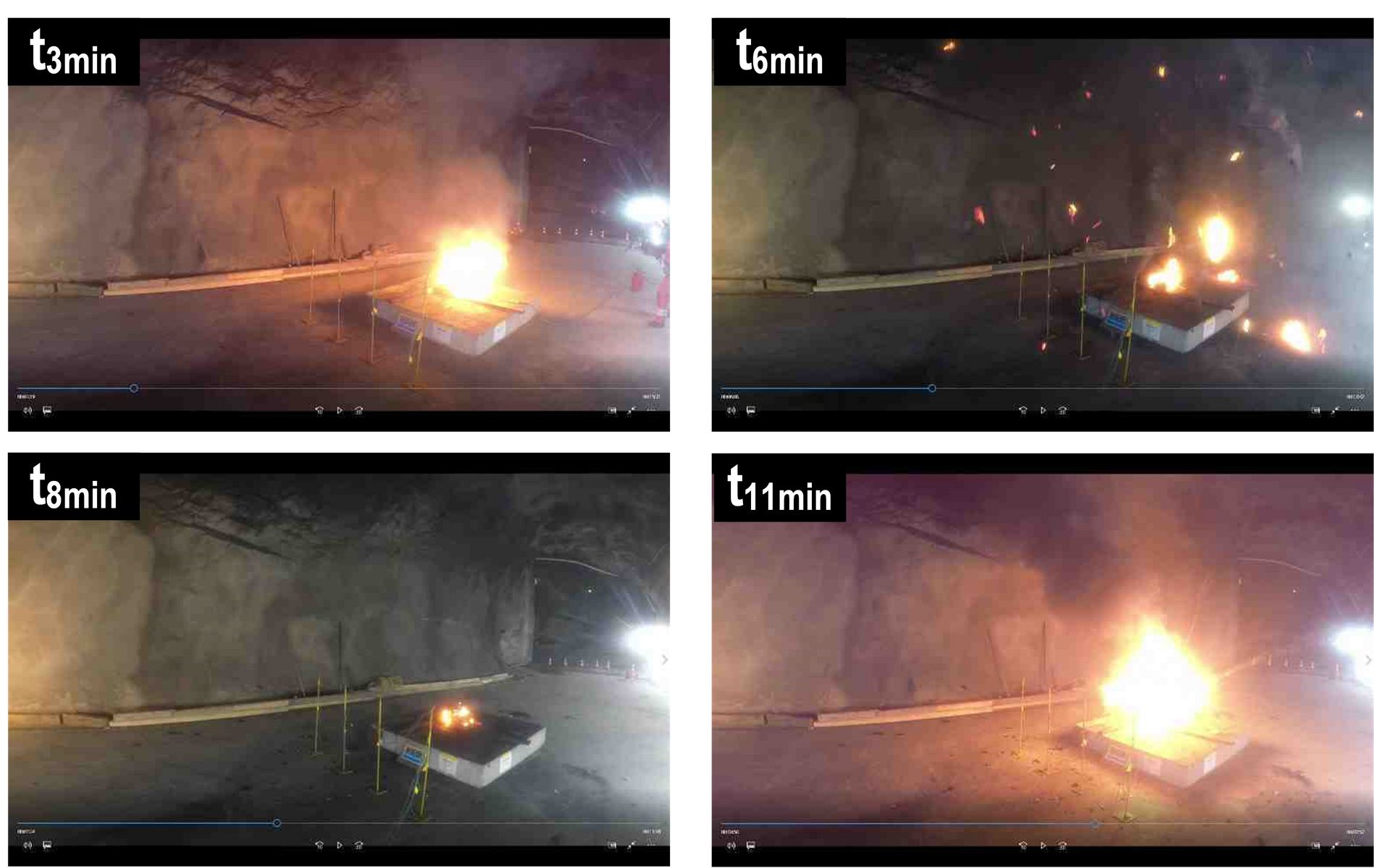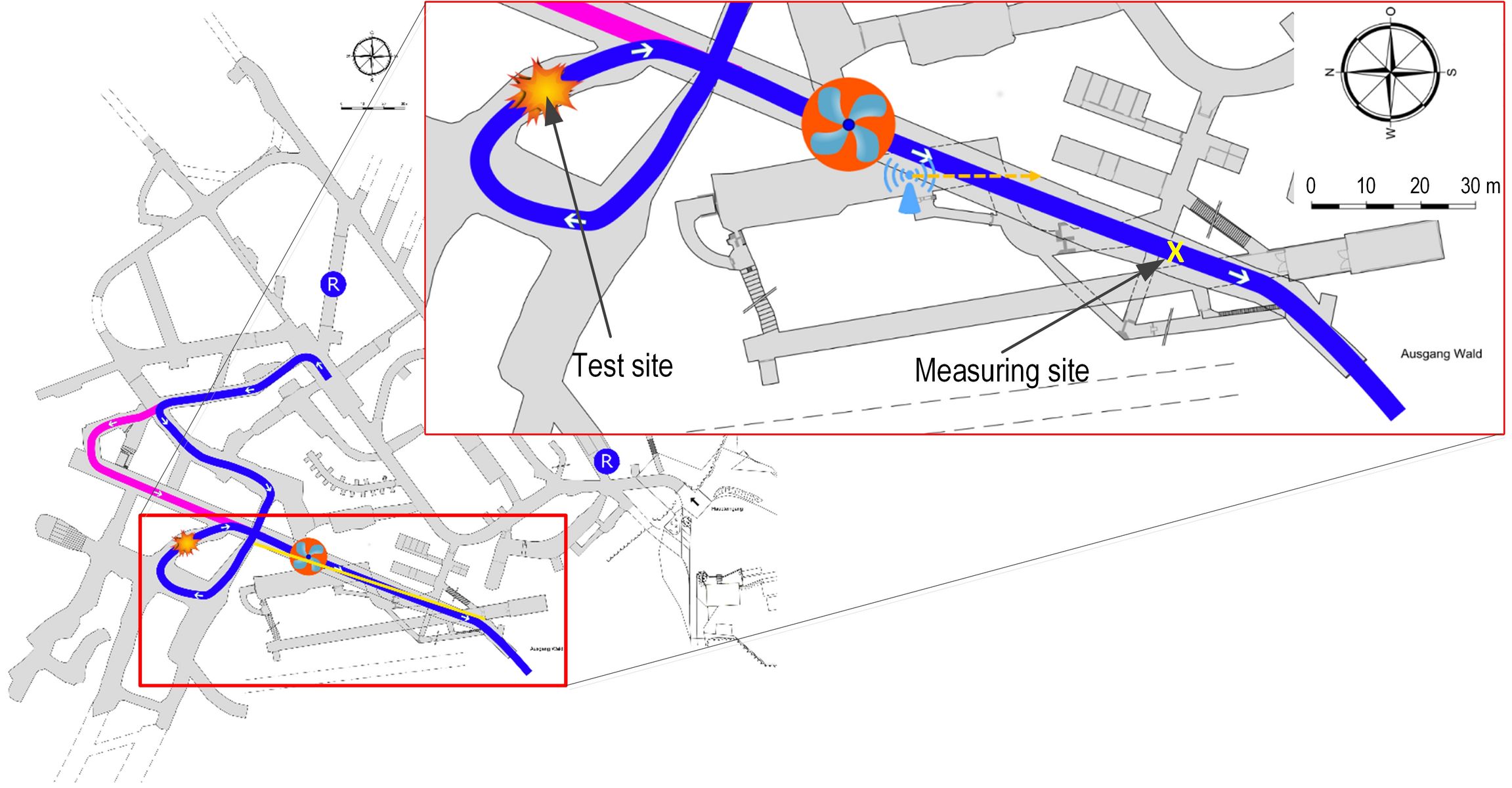Reaction of the battery modules at different points in time after the start of the experiment. (Source:Final Report ASTRA)
The researchers under the direction of Lars Derek Mellert (Amstein + Walthert Progress AG on behalf of the Swiss Federal Office of Roads) came to the conclusion that electrical cars on fire can expose individuals to dangerous chemical elements. A burning Li-Ion battery emits toxic substances like hydrogen fluoride, phosphoric acid, phosphine, lithium and aerosols of heavy metals (cobalt, manganese).
Road tunnels conforming to standards with powerful smoke extraction installations are already equipped to come to terms with such an accident. Specialists see however a problem with underground parking lots devoid of efficient ventilation systems. In such an environment, the fire of an electric vehicle represents a higher risk of poisoning, in particular near charging stations.
Map of the testing area: test site (explosion), main ventilated gallery (blue) with bypass (pink), ventilator and measuring site (yellow cross). (Source: Final Report ASTRA)
As a project partner, the Hagerbach Test Gallery (VSH) has collaborated in the planning of the battery tests and was responsible for the realization of the trials. This active collaboration allowed the VSH to acquire competencies in the conception, realization and analysis of such large-scale experiments. As Dr. Michael Kompatscher, director of the VSH, explains it, the subterranean laboratory offers the ideal infrastructure for this type a studies: «In our different tunnels with various gauges and installations, the field experiments can be conducted under realistic but controlled conditions.»
You can download the final report in PDF format: «Electric Mobility and Road Tunnel Safety»






